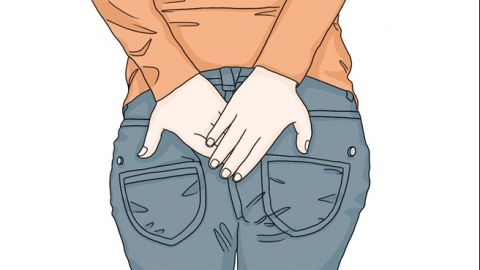How to reduce swelling of prolapsed internal hemorrhoids with redness and swelling
Generally, internal hemorrhoid prolapse refers to the protrusion of internal hemorrhoids. The swelling and redness associated with internal hemorrhoid prolapse may be related to prolonged standing or sitting, straining during bowel movements, anal sinusitis, thrombosed external hemorrhoids, rectal mucosal prolapse, and other factors. Swelling can be reduced through general treatment, medication, or surgical treatment, as recommended by a physician. Detailed analysis is as follows:

1. Prolonged Standing or Sitting
Prolonged sitting or standing can impede venous return in the pelvic cavity, causing the rectal venous plexus to remain congested for extended periods, which can lead to internal hemorrhoids. If not treated promptly, symptoms may progressively worsen, causing prolapse and swelling of internal hemorrhoids during coughing or straining. It is recommended to avoid maintaining the same posture for long periods, engage in appropriate physical activity, and promote pelvic blood circulation.
2. Straining During Bowel Movements
Long-term improper diet, constipation, and other factors may lead to excessive straining during defecation, increasing abdominal pressure and obstructing venous return in the anus, thereby contributing to the formation and exacerbation of internal hemorrhoids, which may further cause prolapse and swelling. It is recommended to increase dietary fiber intake, such as consuming more fruits and vegetables, avoid spicy and irritating foods, and develop regular bowel habits.
3. Anal Sinusitis
Bacterial infection, anal sinus injury, constipation, and other factors may lead to anal sinusitis. Inflammation of the anal sinus and anal valve may result in localized anal infection, leading to swelling and redness. Symptoms often include a feeling of incomplete evacuation and pain. Treatment may involve the use of medications such as amoxicillin capsules, ampicillin and probenecid dispersible tablets, and bear bile hemorrhoid ointment, as directed by a physician.
4. Thrombosed External Hemorrhoids
Improper straining during defecation, anal trauma, and consumption of spicy or irritating foods may trigger thrombosed external hemorrhoids. Blood clots may form in the external hemorrhoidal venous plexus, causing local capillary dilation and congestion, which can induce inflammatory reactions, prolapse, and edema of internal hemorrhoids. Symptoms may include a sensation of pressure, pain, or rectal irritation. Treatment options may include surgical procedures such as excision of thrombosed external hemorrhoids or hemorrhoidectomy, as advised by a doctor.
5. Rectal Mucosal Prolapse
Loose perirectal tissue, obesity, and constipation may cause rectal mucosal prolapse. The loosened rectal mucosa may accumulate within the rectal cavity without protruding through the anus, or tissue inside the anus may prolapse externally, potentially causing internal hemorrhoid prolapse. If incarceration occurs, swelling and redness may develop. Symptoms often include increased bowel movement frequency and a feeling of incomplete evacuation. Treatment may involve surgical procedures such as external excision and internal ligation or mucosectomy, as directed by a physician.
It is recommended to increase dietary fiber intake, consume more fresh vegetables and fruits, and avoid spicy and irritating foods to maintain perianal health.








